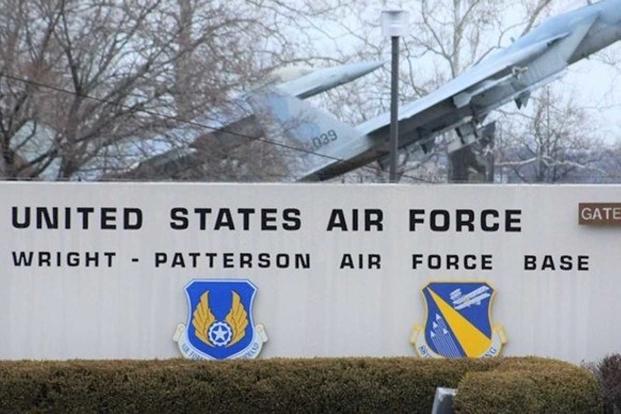
Wright-Patterson Air Force Base is poised to get a new space-focused intelligence mission and 90 new personnel in the process, the Air Force announced.
Wright-Patterson is expected to host a new unit, the 76th Intelligence, Surveillance and Reconnaissance Squadron, after an environmental impact analysis this summer, gaining about 90 new personnel, the Air Force said.
The squadron will improve and integrate intelligence capabilities with a focus on a “military advantage in space,” the service said in a release late Wednesday.
The squadron will be expected to execute intelligence, surveillance and reconnaissance data across orbital regimes and terrestrial environments, fusing data from fielded sensors in a current and future space surveillance network to identify adversary capability, the Air Force said in a release.
The squadron will bring almost 90 new personnel to Wright-Patterson and is expected to reach full operational capability in 2025.
“The expected basing of the 76th Intelligence, Surveillance, and Reconnaissance squadron is yet another indicator of Wright-Patt’s status as the flagship installation of the Air Force’s and Space Force’s Air and Space Intelligence capabilities,” said U.S. Rep. Mike Turner, who is chairman of the House Select Permanent Committee on Intelligence. “As adversaries continue to invest in ways to challenge U.S. interests, intelligence capabilities on base are a critical component of the broader national security mission. I look forward to welcoming nearly 90 additional Air Force personnel and their families to join our Southwest Ohio community.”
The next step in the basing process is for an environmental impact analysis, scheduled for completion this summer, after which a final decision will be made, said Air Force spokeswoman Sarah Fiocco. The current plan is for the squadron to use temporary facilities until a permanent facility at Wright-Patterson is determined.
The field command responsible for the squadron is Space Operations Command, which has its headquarters at Peterson Space Force Base in Colorado.
Intelligence Guardians and Airmen within the squadron will provide critical, time-sensitive and actionable intelligence for joint warfighters, interagency, civil allies and partners operating in space, Fiocco told the Dayton Daily News.
“This added squadron will expand intelligence gathering, which will enhance Department of Defense and intelligence community partnerships strengthening the effectiveness of space operations and space-related activities,” she said.
This is a new unit, Fiocco also told the Dayton Daily News Thursday.
Asked if the new squadron will involve a loss of personnel currently at Wright-Patterson, Fiocco said: “There currently will not be any mission losses as a result of this move or an exchange of personnel.”
The move represents yet another space-focused and intelligence-focused mission at Wright-Patterson.
In 2021, the U.S. Space Force said it was standing up the National Space Intelligence Center, or NSIC, to be co-located with the National Air and Space Intelligence Center, or NASIC, at Wright-Patterson. The NSIC, also called ” Space Delta 18,” was officially activated in June 2022.
With some 35,000 military and civilian employees, Wright-Patterson is already the largest single-site employer in the state of Ohio.
Questions about the announcement have been sent to JobsOhio, the state’s private jobs-creation arm, and the Dayton Development Coalition, as well as Joe Zeis, who advises Ohio Gov. Mike DeWine on aerospace and military issues. A spokeswoman for the 88th Air Base Wing at Wright-Patterson referred questions to Air Force public affairs personnel.
Air and Space Forces magazine reported this week that as the Air Force retires aging intelligence, surveillance, and reconnaissance aircraft, it will look to the Space Force and the federal Intelligence community to fill gaps.
The magazine quoted Air Force Lt. Gen. Leah Lauderback on the importance of space-based ISR work.
“We’re going to have incredible amounts of sensors that are coming that are space-based and thus have a certain amount of resiliency, more resiliency or more survivability, certainly, than some of the airborne capabilities that (the Air Force is retiring),” Lauderback told the magazine during a Mitchell Institute for Aerospace Studies event.
Lauderback is very familiar with Wright-Patterson. She is the deputy chief of staff for Intelligence, Surveillance, Reconnaissance and Cyber Effects Operations and a former NASIC commander at Wright-Patterson.
___
(c)2023 Springfield News-Sun, Ohio
Visit Springfield News-Sun, Ohio at www.springfieldnewssun.com
Distributed by Tribune Content Agency, LLC.
© Copyright 2023 Springfield News-Sun, Ohio. All rights reserved. This material may not be published, broadcast, rewritten or redistributed.






